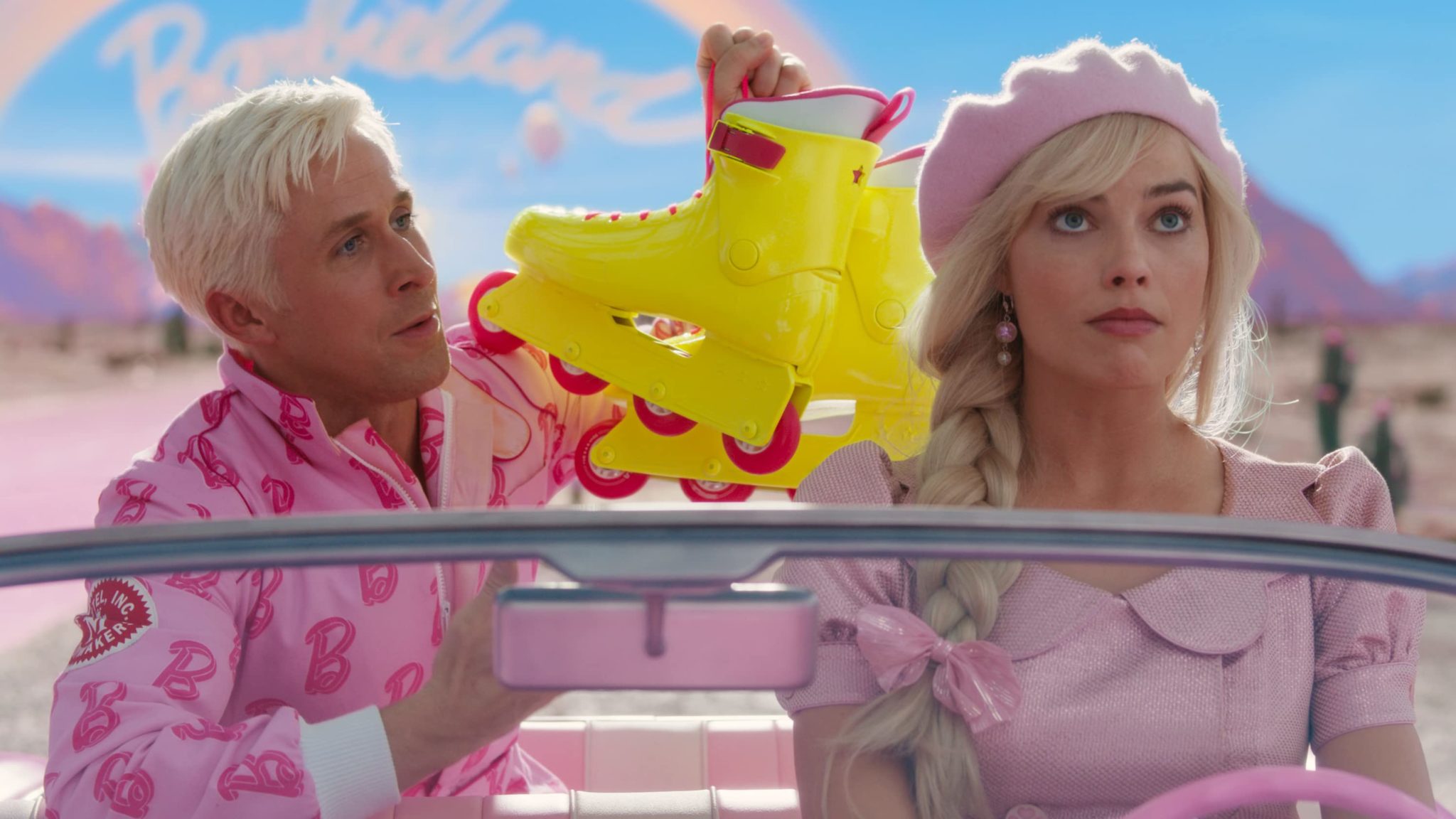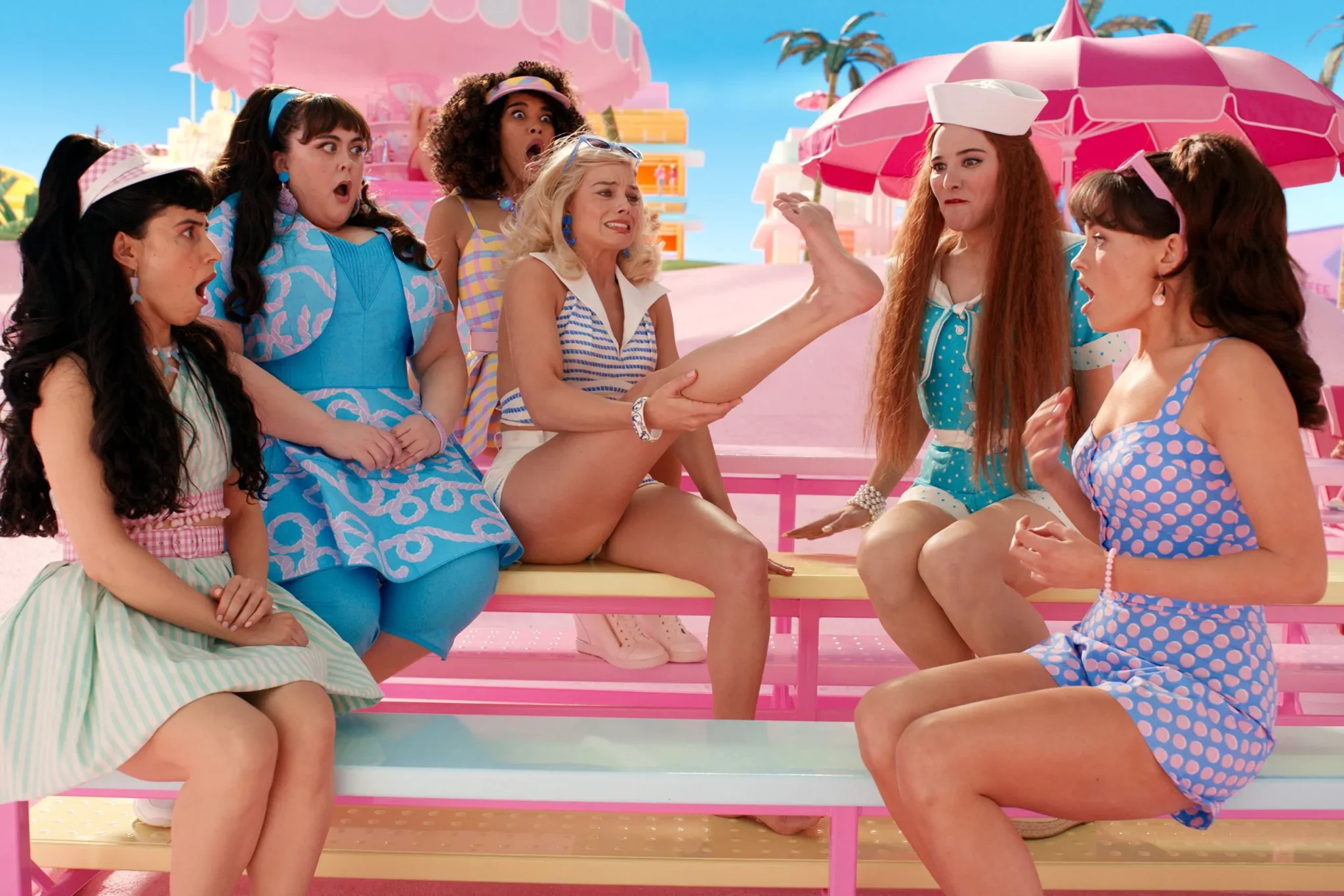Playdates, plastic accessories, paper dollhouses, Bibble, “I Am a Girl Like You,” and the puzzling Schlond Poofa. All of that led me to this: Greta Gerwig’s Barbie.
The public perception of Barbie, the doll–or the idea, as this film also refers to her–has changed over the years, along with conversations around body image, over-sexualization, racial representation and feminism in general. It was only as I got older that I started to question what ideas that I had bought into, but, as a kid, I loved Barbie. When water ruined the cardboard dollhouse that I begged my parents to get me, I converted the small 3-tier radio shelf in my room into a Barbie condo; I had set a personal goal of getting my straightened African hair to be as long as Barbie’s; and I kept my blonde beach Barbie in pristine condition. I never actually put soap in her hair when my sisters and I had ‘wash days’ for our dolls because I didn’t want to ruin it and I never redid her makeup with markers because, to me, she was already perfect.
And yeah… Ken was there too.

By the time that I realized Mattel was rolling out more inclusive Barbies, I had outgrown her. But Miss Barbara has managed to stay relevant all these years because she changes with the culture. She’s of varying races, sizes, and abilities; and has ventured into music, books, and animated TV and film. She’s pretty, and girly, and fit, and career driven, and artsy, and talented, and smart, and techy, and in Gerwig’s film, she’s reintroduced to us again: Miss Barbara is… tired.
In Barbie, Barbie (Margot Robbie) sets off on an adventure to the real world to stop her life from changing from its perfect state, and Ken (Ryan Gosling) tags along because he needs to be with Barbie but ends up on his own quest for identity. That’s a very barebones, spoiler-free summary of this story that has humour, emotion, cultural commentary, and – in my opinion – a surprise antagonist. All of this is wrapped up in a film that feels like a Barbie film (not to reference “it feels like a movie”) – it’s campy, it has a lot of fun, and it allows us to do the same.
The cast is fantastic. We’ve all seen the promos; Robbie is basically Barbie IRL. Shoutout also to all the Barbies and Kens (and Alan) who made Barbieland feel like Barbieland, Will Ferrell who fits perfectly into his role, and America Ferrera whose character is all of us. Gosling brings most of the humour to this film for me and seeing him embrace that over the top ‘ken-ergy’ (complete with his own musical number!) is everything.

When Barbie gets to the real world, a world that she believes she has saved from misogyny, she realizes nothing is as ideal as she thought it would be here. In fact, she discovers that she has hurt some of the women that she always believed she had saved. To make matters worse, when she gets back to Barbieland, she finds that she must now save it from a new threat. Barbie has a crisis, because even with all her accomplishments, she doesn’t feel like saving Barbieland is something that she is equipped to do. It’s here that the film seems to speak directly to us by saying, without mincing words: women are somehow expected to be all the things–which is exhausting, but also not too much of any of them–and that’s just impossible. The “she’s everything” in the tagline of the film is not just a flex for Barbie.
It’s also her problem.
The film also asks, if this idea that just represents women is pulled back and forth and in all these directions, what about the real people? Of course, it’s crippling having to be good at everything and good for everyone. At the end of Barbie, the idea of humanity is presented as a shift from this, where things are imperfect: you work, cry, get older, get cellulite, and eventually die, but you get to be ordinary, and figure it out, and live, something Barbie has never had the chance to do.

And then there’s Ken, who literally has a tantrum if Barbie isn’t looking at him. I’ve seen some people refer to this film as ‘man-hating,’ but one, it does makes sense that Ken behaves like the ampersand is part of his name (‘& Ken’) because most people who played with Barbie will tell you that he operated more like one of her accessories. In our imaginations, it was Barbie’s world and he was just living in it. Two, this film gives more voice to Ken and his feelings than I’ve ever seen; and I appreciated that a lot. Life in the Dreamhouse (which is hilarious, and you should check out if you like this film) is another Barbie story with an overtly ‘Ampersand Ken’ who seemed to live only for Barbie. Watching that as a *much* older teenager, I found myself feeling sorry for him. He worshipped her, and I wasn’t convinced that she actually liked him. For all of us, Barbie gets to take on the world, and Ken gets to be there with Barbie.
“She’s everything, he’s just Ken”.
Gerwig’s Barbie asks how Ken feels about this and takes us through major himbo energy (again, Gosling, chef’s kiss), questionable solutions, and surprising vulnerability to arrive where Ken needs to be: “he is kenough.” One of the Kens says, “we were fighting because we didn’t know who we were,” and call me reductive, but I feel like a lot of conflict would not happen if we were just satisfied in ourselves.
I saw someone say that this film isn’t ‘anti-man’, but ‘pro-women’, which I agree with, and I think that by looking under the surface of this film and that statement, you’ll find that it’s ‘pro all of us’.
So, Barbie once again has found her way back into my life. They really meant it when they said, “ideas live forever.”
Barbie is available in theatres on Friday, July 21st, 2023.






This review is so easy to follow and understand, especially if you’re not into Barbie. It’s thus excellent in its simplicity!